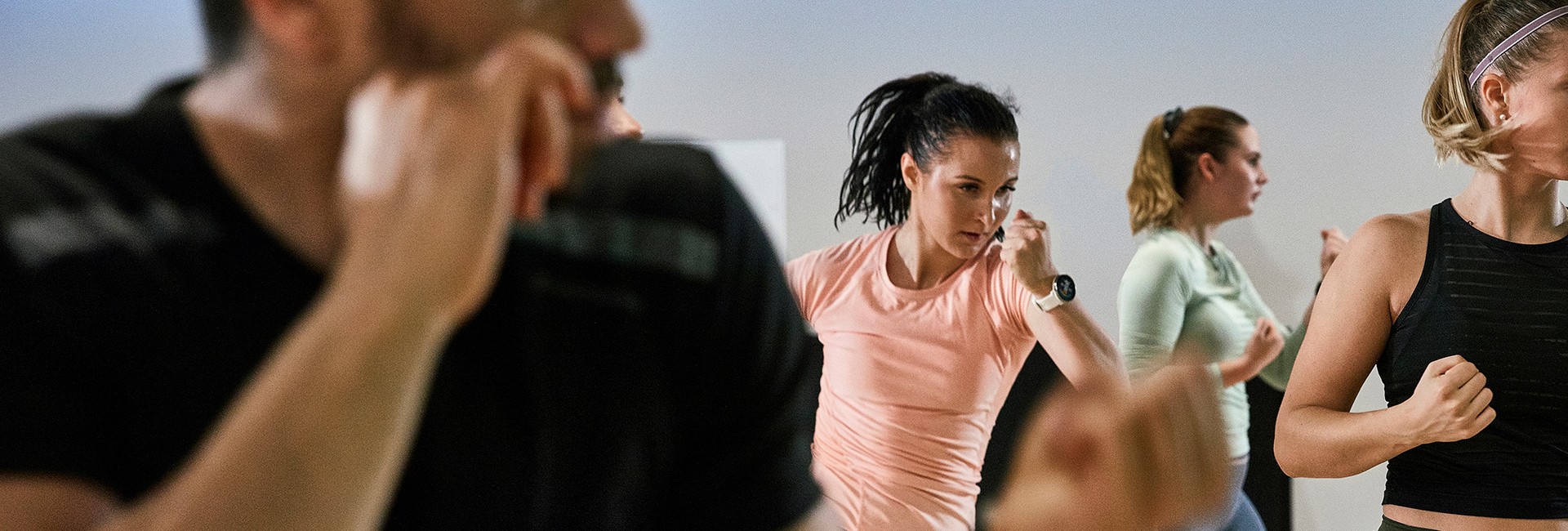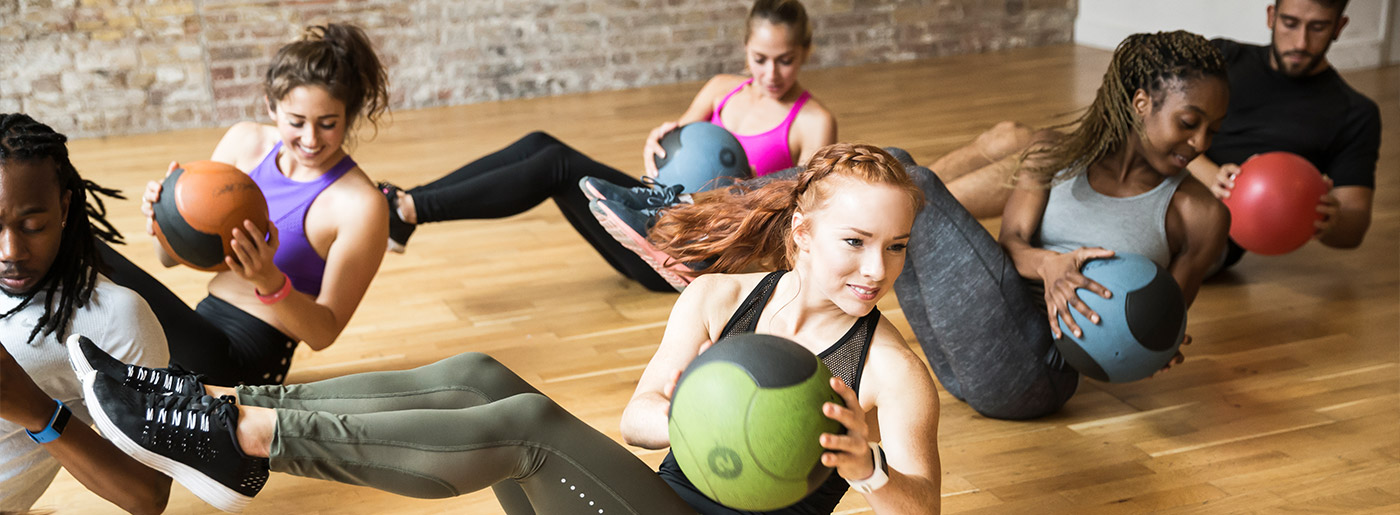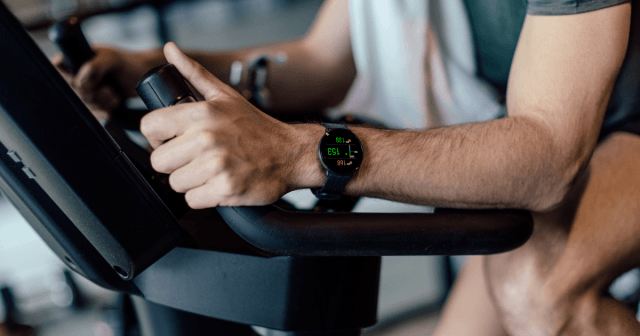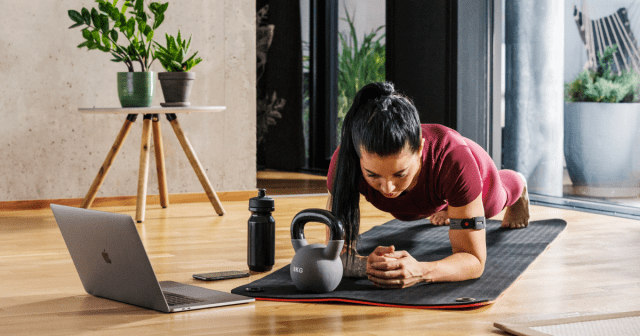Out of shape, but not sure how to start working out? We’ve got two words for you: group fitness. (Of course, there’s a third – wearable technology – but coming from us, it’s kind of obvious.)
The fitness industry (not to mention fitness technology) has seen a lot of fads come and go over the last 20 years, but one constant has been the enormous popularity and success of group fitness activities of all stripes, whether talking about group training for a marathon or a spin bike session beside the Tuesday regulars down at the gym.
Fitness pro Jim Guimond isn’t surprised by the enduring attraction of group fitness as its appeal goes way beyond the social aspect, extending all the way to boosting motivation and accountability.
Here’s why group fitness is a great place to start working out and how using fitness technology can further boost results and make your (group) fitness endeavors even more successful, rewarding, and undeniably fun.
What makes fitness Fun And Rewarding?
All his life, Jim has loved and excelled at athletic pursuits. He took his high school wrestling abilities with him into the military and then moved on to time trials and triathlons as a hobby. In 1993, Jim decided to pursue his passion in fitness and wellbeing and threw himself into teaching at various gyms and clinics at first and later went on to opening his own business, focused on helping clients adopt a balanced, healthy, and productive lifestyle.
He began to form a holistic approach to fitness and instead of looking at physical fitness as an isolated activity or goal, he saw it as a lifestyle approach – a way to live life that maximized individual potential while providing life balance.
After decades of working with a variety of clients, Jim Guimond has identified what makes fitness fun and rewarding:
Seeking out social interaction to boost motivation and accountability.
The fun factor comes to play when you’re working out in a group as it’s not just you gutting it out alone through a grueling workout. It’s you and the rest of the class getting through it together, inspiring each other to keep up in step class, to perfect our downward facing dogs, or to put more power to the pedal
As far as accountability and motivation go, fitness technology to stay on track plays an essential role in making (and seeing the) progress and ultimately achieving fitness goals. Enter group fitness and wearable tech – two of Jim’s favorite specialties.
Accountability Makes Group fitness Effective
It doesn’t matter whether your “group” is your neighbors asking you for a morning jog, your gym buddies waiting for you to show up for Tuesday spin, or your online weight loss group standing by to cheer you on. Bottom line, it all equates to accountability.
When someone is watching, waiting, or cheering us on, we all work a little harder and get inspired to excel by the energy or success of the group.
When you’re working out alone, it’s easy to let the mind wander and lose focus, but when a class instructor is up front telling you to hit 120 rpm on your pedal stroke and the class takes off, so do you.
In addition to the group spirit, fitness technology is an effective way to make sure your accountable (if not to anyone else, at least to yourself). Tracking your workouts makes it possible for you to actually see in cold hard numbers what you did (or didn’t do). It’s makes a whole lot of difference, as opposed to just guesstimating (and possibly fooling yourself).
How fitness technology Can Help You stay motivated and accountable
Jim’s introduction to, and subsequent love of, wearable tech came from one of his cycling superheroes Greg LeMond in 1989 when he had just snatched his 2nd Tour de France victory, wearing a heart rate monitor (a practice LeMond started in 1985). Jim figured if the legendary LeMond thought it was a good idea, it had to be a good idea.
After purchasing his first Polar HR monitor, Jim was hooked. He discovered it not only motivated him, but also ensured every workout was a smart one, helping him push harder or hold back depending on the goal for the day. (Of course, wearable technology has changed quite a bit since then and fitness watches now offer so much more than tracking just the opportunity to track your workouts.)
After Jim went into coaching full time, he recognized the huge advantage wearable tech would deliver not only to his personal training clients but to his coaching capabilities, too. It is a mainstay of his personal training programs, helping his clients adhere to their workout goals while allowing him to monitor and modify their programs via online data sharing.
What’s more, Jim has discovered that the integration of wearables in his group fitness classes has amplified the benefits of group fitness by adding in a bit of friendly competition.
At gyms that use a service like the Polar Club, group fitness participants can track their efforts and see how they’re doing both individually and compared to others in the group in real time. <
How to start working out
1. Join a group
Group fitness is one of the best ways to create friendships and accountability to stay motivated. The synergy of the pack will help you get your game back on track and keep you going.
2. Use technology
Every workout should start with a goal. A solid workout buddy on your wrist will help you achieve your full potential and keep you honest.
3. Give yourself a break
Don’t sweat the small stuff. If you miss a workout or blow your nutrition for the day, all is not lost. You can start fresh in the morning.
4. Read an inspirational book
Jim Guimond’s reading recommendations include:
- Younger Next Year (Chris Crowley, Henry Lodge), a guide to living fit into your 80s
- The Rise of Superman (Steven Kotler), which explores the concept of “flow” for feeling and performing at your best.
If you liked this post, don’t forget to share so that others can find it, too.
Or give it a thumbs up!
I like this article
Please note that the information provided in the Polar Blog articles cannot replace individual advice from health professionals. Please consult your physician before starting a new fitness program.






